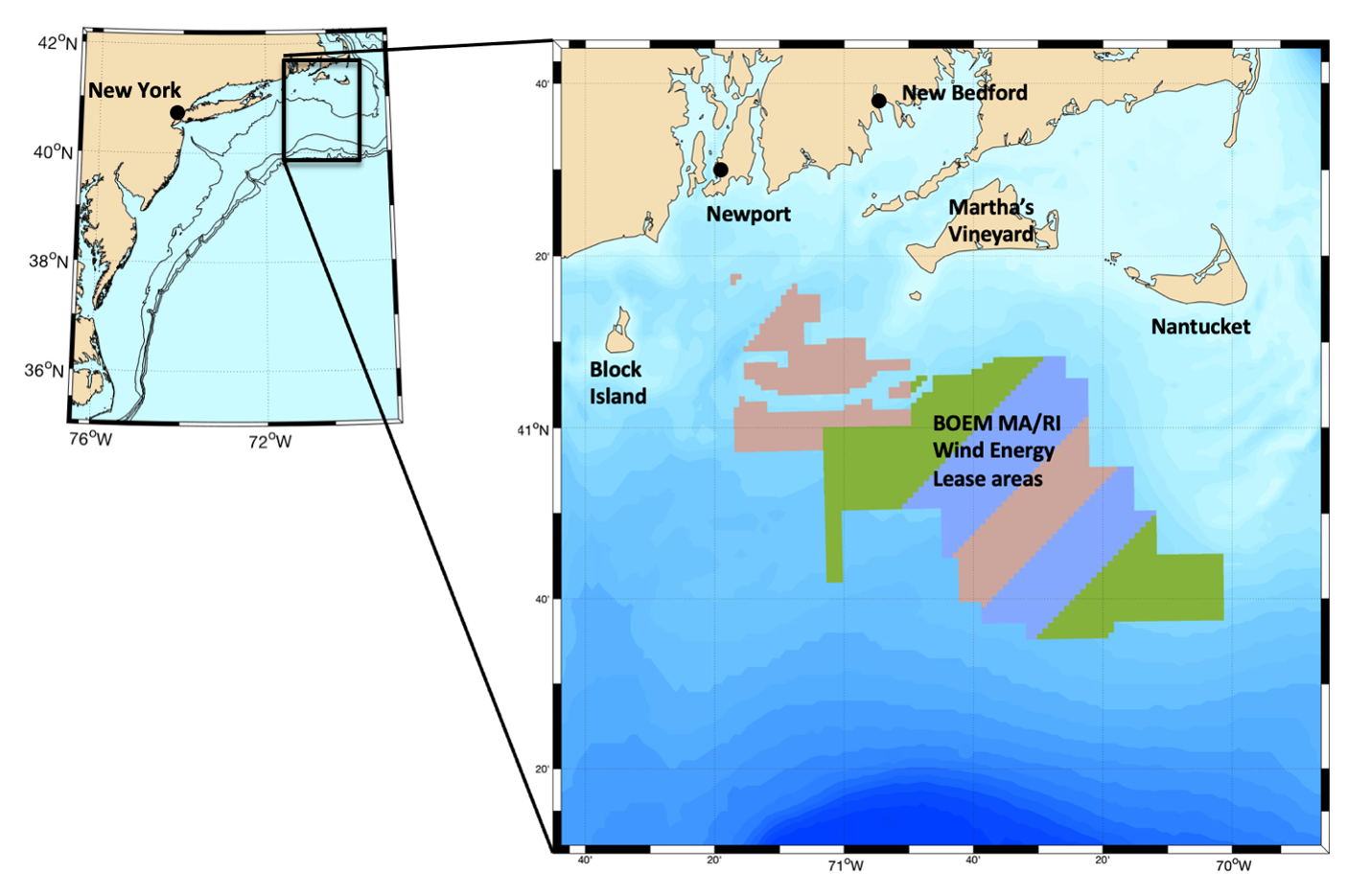Scientific Objectives
WFIP3 will focus on the U.S. East Coast to take advantage of ongoing observations and planning and construction activities associated with the MA/RI wind lease areas.
The observational and modeling components of this program include three research areas:
- Marine Atmospheric Boundary Layer, where the research will focus on improved characterization and parameterization of boundary layer processes from the mesoscale (WRF) to microscale (LES) simulations. These goals include improvement in our ability to simulate MABL turbulent wind field, clouds, moist convective processes, precipitation, horizontal advection and 3D processes driven by changes in surface roughness, sea-surface temperature (SST) gradients and boundary layer depth that necessitate a 3D boundary layer scheme. The measurement array deployed during WFIP-3 is being designed to quantify these 3D processes. The observations, models, and simulations will be used to investigate stratified flows, fog, low-level jets, internal boundary layers, wake effects, and sea-breezes.
- Air-Sea Interaction, where the research will provide state-of-the-art parameterizations of momentum, heat and mass exchange across the air-sea interface and flux-profile in the atmospheric and oceanic surface layers. These focus areas include the effect of surface waves, currents, SST, precipitation, and evaporation on the coupled surface layers. The improved parameterizations will be used in one-way coupled (i.e., prescribing SST only) atmospheric models and, more importantly, in the continued development of a fully coupled atmosphere-wave-ocean model in hindcast mode.
- Mesoscale Flows, where the research will take advantage of the observationally validated modeling improvements to further investigate weather phenomena that have a strong impact on the operation of offshore wind farms. These phenomena include squall lines, fog formation, icing events, wave development, cold-air outbreaks and winter storms in coastal regions. The impact of mesoscale variability in the ocean SST, wave and current fields on these weather phenomena will be conducted using a coupled ocean-wave-atmospheric model. The ultimate goal of combined MABL and ASI efforts is to improve mesoscale forecasts in support of the wind energy mission
Core Research Questions:
- What are the characteristics of the marine atmospheric boundary layer, surface layer, and coastal ocean in the study region and how might they affect energy production and turbulence?
- What are the effects of mesoscale atmospheric or oceanic processes on boundary and rotor layer characteristics in the study region?
- What are the impacts of a dynamic, coupled, atmosphere-wave-ocean on the atmospheric boundary layer and wind power forecasts?
- How can air-sea fluxes and flux profile parameterizations be improved to better capture the evolving characteristics of winds in the study region?
- What are the effects of clouds and precipitation on boundary layer, rotor layer winds and turbine performance?
- How do atmospheric and oceanic conditions influence turbine or wind plant wakes in offshore conditions and our predictions of turbine wake morphology, evolution and wake interactions?
